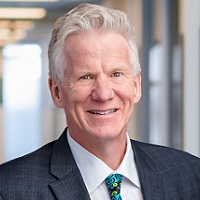 By Nick van Terheyden aka Dr Nick, Principal, ECG Management Consulting
By Nick van Terheyden aka Dr Nick, Principal, ECG Management Consulting
Twitter: @drnic1
Host of Healthcare Upside Down – #HCupsidedown
Years ago, when I was working as a junior doctor, one of my least favorite tasks was finding a bed for a patient who needed admission from the emergency department (ED). The system was simplistic: we as a team or “service” were linked to specific wards in the hospital. We had influence over the beds but not absolute control; even now, I’m not sure who had the ultimate authority, but I suspect it rested in the administrative wing of the hospital and not with the clinicians.
But that system broke down quickly because we didn’t have enough beds allocated to our group. They were already full of patients awaiting treatment, undergoing diagnosis, or recovering before discharge.
If it was a busy day in the ED, finding a bed meant calling around all the wards to see if there was any availability. There was a handwritten list on a whiteboard in the ED, but it was never up to date. Your best bet was to learn the ebbs and flows of patients in various departments.
The notion that years later we are struggling with the same problem—in a day and age when you can track your package delivery to your doorstep or get real-time updates on wait times in security lines at the local airport—is frustrating at best. We might have a slightly better sense of beds in the facility with digital admissions tracking but can’t easily tell whether there’s 1 bed or 20 available in the hospital next door.
“As a nation, the United States has a lot of silos,” says Omar Lateef, DO. “Hospitals compete against one another. And when you do that, you can’t share information or learnings from one hospital to another.”
Episode NOW on Demand
Dr. Lateef is the president and CEO of Rush University Medical Center in Chicago. He joins me to talk about the need for increased data transparency, removing administrative burdens to get clinicians back to their patients’ bedsides, and why healthcare is like the Ever Given, the massive container ship that famously got stuck in the Suez Canal. Here are a few excerpts.
Data transparency during a crisis.
“When the pandemic broke, one of the challenges that we recognized here at Rush University Medical Center was finding a better way to put the right patient in the right facility to offer the best care that they needed, so that there weren’t patients that didn’t need high-level care using a high-level bed, and there weren’t patients waiting in a lobby to get a high-level bed when they were at risk of dying. So the way to close that gap was by opening data transparency. What the pandemic created was an immediate necessity to share that information. It became the driver.”
Getting clinicians back to the bedside.
“I’ve never met a nurse that was frustrated by helping somebody at the bedside. I’ve met many, many nurses that are really upset about the amount of documentation they have to do, because it keeps them from going back to the bedside and making someone feel better. I don’t want to train the next generation of healthcare providers to be great documenters—I want to train them to be great doctors, great nurses. We need a better system to capture and reward those people that are providing the care.”
The need for a unified vision of healthcare.
“People who laid out an incredible amount of effort and risked their own welfare to fight a pandemic are exhausted and burning out at an unprecedented rate. If we don’t fundamentally change the way we provide care, then we’re not doing good for providers, and we’re not doing good for patients. So opening up access is the most obvious thing that as a country we have to do. What has to happen is we have to decide, as a nation, what our expectation is from the healthcare world and then provide the resources to achieve that vision. If that’s not done, then the only way to maintain a successful healthcare infrastructure in the industry right now is by living within the current paradigm of healthcare and how it’s reimbursed. It’s hard to be innovative. Innovation comes at a cost to your daily business.”
About the Show
The US spends more on healthcare per capita than any other country on the planet. So why don’t we have superior outcomes? Why haven’t the principles of capitalism prevailed? And why do American consumers have so much trouble accessing and paying for healthcare? Dive into these and other issues on Healthcare Upside/Down with ECG principal Dr. Nick van Terheyden and guest panelists as they discuss the upsides and downsides of healthcare in the US, and how to make the system work for everyone.
This article was originally published on the ECG Management Consulting blog and is republished here with permission.
